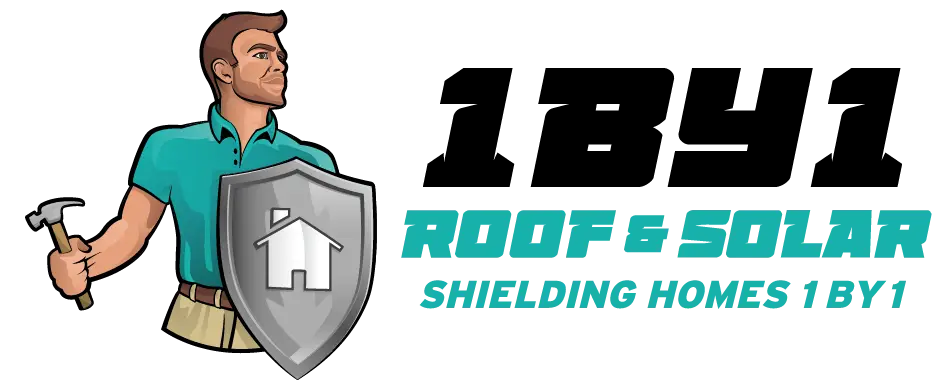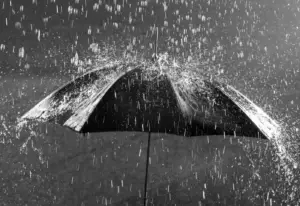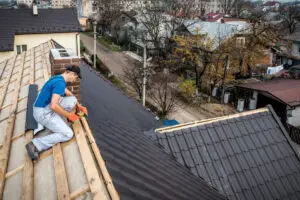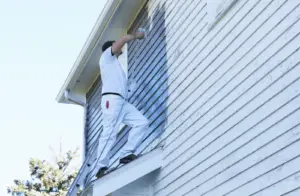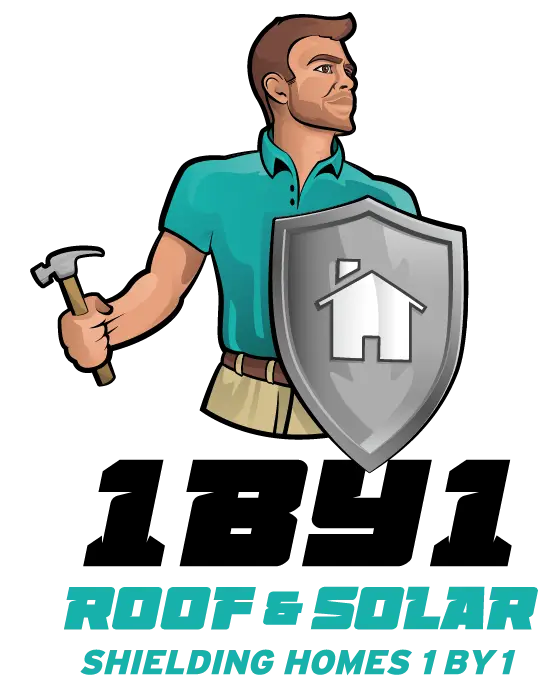No homeowner likes to think about roof replacement, but it’s an essential part of property maintenance. Your roof is your home’s first line of defense against the elements. It’s crucial to spot potential issues early before they turn into costly repairs or even complete roof replacements. Our team at 1 by 1 Roof in Tucson, AZ, is dedicated to helping homeowners make educated decisions about their roofs. So, here are some telltale signs you might need a new roof.
Visible Damage to the Shingles
Shingles are a critical component of your roofing system, functioning as the first line of defense and acting as an umbrella to your home. Crafted from various materials such as asphalt, wood, or tile, shingles are meticulously overlapped in a specific pattern on your roof. This layered design provides an effective barrier between your home and the external environment, shielding your property from elements like rain, snow, and hail.
One of the primary roles of shingles is to prevent water infiltration. Water is an insidious enemy to any home. When it seeps into your home’s interior, it sets off a cascade of problems. These can range from minor issues like unsightly water stains on your ceilings or walls to major structural damage, including mold growth and wood rot. Over time, these problems can compromise the structural integrity of your home and result in significant, costly repairs.
To detect problems early, it’s vital to be aware of the signs of shingle damage. Shingles in good condition should lay flat against the roof. However, exposure to harsh weather conditions can cause them to curl or buckle. Curling refers to the shingles’ edges lifting from the roof, creating an entry point for water, while buckling describes a visible distortion or wave across the shingle’s surface, usually resulting from roof movement or improper installation.
Another clear indication of a problem is missing shingles. Severe wind or storm conditions can rip shingles off the roof, leaving the underlayment or the roof deck exposed to the elements. This situation calls for immediate attention, as the uncovered parts of the roof are highly susceptible to water damage.
Lastly, if you start noticing a significant number of granules—the tiny, grain-like particles that coat the shingles—in your gutters, it’s a sign of shingle deterioration. These granules provide an added layer of protection to the shingles, shielding them from UV rays and enhancing their water-shedding capabilities. When these granules begin to shed and accumulate in the gutters, it signifies that the shingles are nearing the end of their life expectancy.
In essence, your shingles are not just an aesthetic feature of your home; they are a crucial part of your roof system designed to protect your property from water damage. Recognizing the signs of damaged shingles, such as curling, buckling, missing pieces, or granule loss, is the first step towards proactive roof maintenance and ensuring the longevity of your home.
If you see any of these issues, it could be time for a roof replacement in Tucson, AZ. Always have an expert inspect your roof to assess the extent of the damage.
Old Age
As a homeowner, you’ve probably heard the general guideline that a roof should ideally last between 20 and 25 years. This period, however, is not set in stone, and the actual lifespan of your Arizona roof can vary significantly based on several crucial factors.
One of the most influential factors determining a roof’s lifespan is the type of material used. Various materials come with different durability and longevity profiles. For example, asphalt shingles, which are the most commonly used roofing materials in the United States, usually last between 15 and 30 years, depending on their quality. Metal roofs, on the other hand, are known for their durability and can last anywhere from 40 to 70 years. Clay and concrete tiles have even longer lifespans, often lasting 50 years or more. On the high end of the spectrum, slate, copper, and tile roofs can last over a century if properly maintained. Therefore, understanding the life expectancy of your specific roofing material can provide a more accurate estimate of when you might need a replacement.
Weather conditions and climate are another critical element affecting a roof’s lifespan. In areas like Tucson, AZ, where the sun shines intensely most of the year, UV rays can cause significant wear and tear on your roof over time. Likewise, locations prone to severe weather events, such as high winds, hail, or heavy snowfall, can cause a roof to age more rapidly. The effect of these elements on your roof will largely depend on the durability and weather resistance of your roofing material.
The quality of the roof’s installation also plays a significant role in its longevity. A poorly installed roof may not reach its expected lifespan, no matter how high-quality the materials used. It underscores the importance of entrusting your roofing project to an experienced, professional roofing company.
In addition to these factors, ongoing maintenance also impacts how long a roof lasts. Regular inspections and prompt repairs of minor issues can significantly extend the life of a roof. Ignoring small problems such as minor leaks or missing shingles can lead to more extensive damage that accelerates the aging process of the roof.
With these factors in mind, if your roof is approaching or has exceeded the 20 to 25-year benchmark, it may be time to start considering a roof replacement. Aging is an inescapable process that affects all roofs eventually, and taking proactive steps can prevent potential structural damage to your home and save you from more expensive repairs down the line.
Water Damage or Leaks
Observing signs of water damage inside your house can be a disconcerting experience. Evidence of such damage often manifests as water stains on your ceilings or walls. These stains might appear as small, seemingly innocuous spots, but they can quickly spread, becoming larger and more noticeable. They may have a yellowish hue or show up as streaks or discolorations. Not only are these marks unsightly, but they also indicate a deeper issue—your roof may be failing.
Another telltale sign of a failing roof is the presence of leaks. If you notice water dripping or seeping into your living space, particularly during rainstorms, it’s a clear indication that something is not right. Leaks may start small, with just a few drops here and there. However, if left unattended, they can escalate quickly, causing extensive damage to your home’s interior. Over time, persistent leaks can lead to more significant issues, like mold growth and structural deterioration, compromising your home’s integrity and potentially your family’s health.
Pinpointing the exact source of water damage or leaks can be challenging, especially for the untrained eye. Water has a sneaky way of traveling, which means the location of the stain or leak inside your house might not align directly with the compromised spot on your roof. For instance, water might penetrate your roof at one point, then flow along a beam or truss before finally dripping down onto your ceiling. This complexity makes it difficult to accurately identify the issue’s origin without professional assistance.
To effectively address water damage and leaks, it’s crucial to seek the help of professionals. Roofing experts have the training and experience to thoroughly inspect your roof, identify any problems, and suggest the most suitable solutions. They can find subtle signs of roof deterioration that you might overlook, helping prevent minor issues from turning into major, more costly problems. Additionally, they can offer advice on maintaining your roof to extend its lifespan and keep your home safe and dry.
If you spot signs of water damage or experience leaks in your home, don’t ignore them. These could be indications of a failing roof, a problem that won’t resolve itself and will only worsen over time. Instead, turn to a trusted roofing professional who can assess the situation and provide guidance on the best course of action, whether that’s a simple roof repair or a complete roof replacement.
High Energy Bills
The quality of insulation and ventilation in your roof can play a crucial role in the energy efficiency of your home, directly impacting your heating and cooling costs. When these aspects of your roof’s structure are inadequate, it can lead to a myriad of issues, including a surge in your energy expenses.
Poor insulation allows thermal energy to move freely through your roof, resulting in heat loss during the winter months and heat gain during the summer. This issue forces your heating and cooling systems to work harder to maintain a comfortable temperature inside your home, leading to increased energy consumption. If your home is consistently too cold in the winter or too warm in the summer, despite your heating or cooling systems running frequently, poor insulation might be the culprit.
Moreover, proper ventilation is essential for maintaining an optimal climate in your attic and the rest of your home. It allows for a continuous flow of air, which helps control the temperature and removes moisture that could potentially damage your roof structure over time. Without adequate ventilation, hot air can become trapped in your attic during summer, making your air conditioning system work overtime. In the winter, improper ventilation can lead to condensation, which can damage your insulation and reduce its effectiveness.
Thus, if you’ve noticed an unexplained or consistent increase in your energy bills, your roof could be the silent factor driving up these costs. Many homeowners overlook their roof as a potential source of energy inefficiency, but it’s essential to consider if you’re struggling with high utility costs.
A well-constructed and properly maintained roof can significantly contribute to the energy efficiency of your home. It will help regulate your home’s internal temperature by preventing heat loss in the winter and reducing heat gain in the summer. This regulation will keep your home comfortable all year round, reduce the strain on your heating and cooling systems, and ultimately, lower your energy costs.
If you suspect that your roof might be contributing to your rising energy bills, it’s recommended to seek a professional roof inspection. This examination can identify issues with your roof’s insulation and ventilation, and provide solutions to improve its performance. Investing in a well-insulated and properly ventilated roof can save you a significant amount of money over time, making it a wise and eco-friendly choice for any homeowner.
Contact 1 by 1 Roof Today For Fast and Efficient Roof Replacement Services!
Knowing the signs of a failing roof can save you from significant expenses and stress. At 1 by 1 Roof, we offer top-notch roof repair and replacement services in Tucson, AZ. If you observe any of the above signs, don’t hesitate to contact us. We’re here to help protect your home, one roof at a time.
